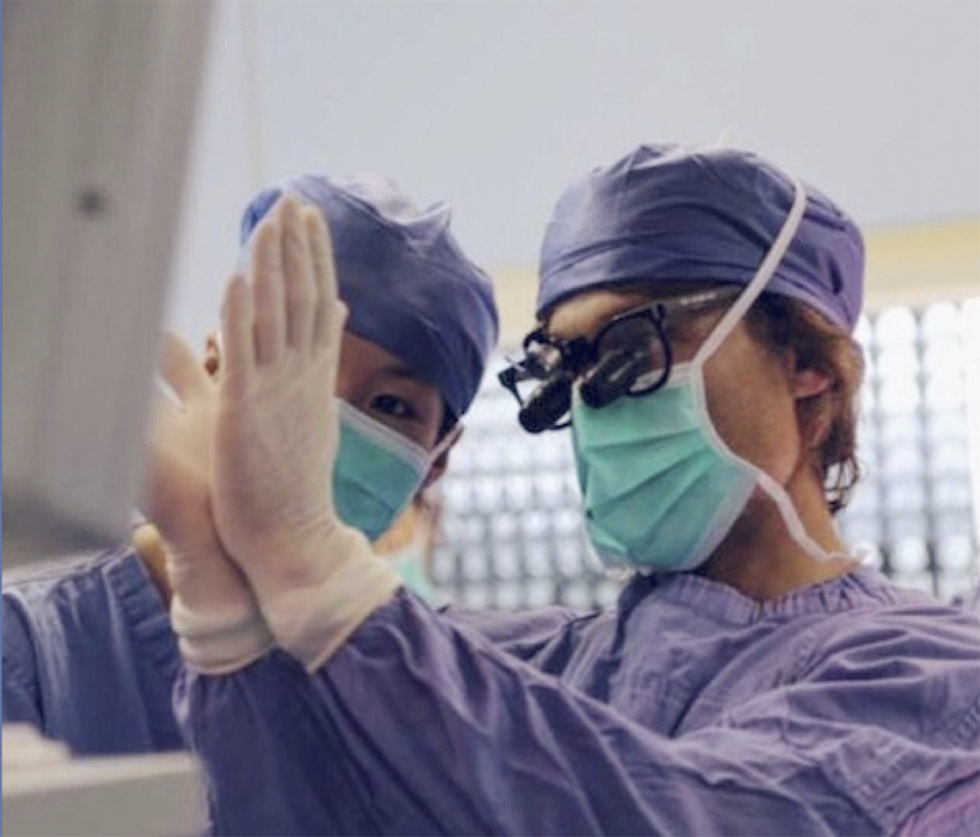Endoscopic brow lifting is my preferred method of aesthetic brow reshaping. I use the word reshaping because the primary lesson I have learned from 20 years of brow lifting is that the procedure should focus on brow shape and contour more than height. This is the single most important caveat of brow lifting and will allow better results and happier patients.

Over the last 4 years I have primarily utilized a temporal endoscopic plane approach (between the superficial and deep temporalis fascia) with or without the use of the endoscope to reshape the brow contour. My focus has been a temporal lift only. In my experience, in most cases, lifting the medial brow is an error which changes normal eyelid and periorbital, and ultimately, facial proportions. Most who need medial brow elevation also have bunching of glabellar tissue, and I have found benefit most from a central pretrichial approach (with tissue excision) combined with the temporal lift described below.
The procedure proceeds with standard temporal approach sub-superficial temporal fascia access to the canthus. This plane is made continuous with the central subperiosteal space by dividing the conjoint tendon. Dissection continues to the arcus marginalis periosteum at the superior orbital rim. The periosteum is released from the supraorbital neurovascular bundle laterally to the canthus. It is critical to release the lateral orbital thickening. The temporal brow is fixated with 2 sutures (2-0 PDS) from superficial to deep fascia. The lift is superior and nasal to avoid brow splaying and provide the best temporal elevation. No cautery is used for bleeding (vascular tourniquet is created with dilute anesthetic and added pure saline as needed – bleeding is controlled with mechanical pressure from volume of injection). Only staples close the wound and no scalp is excised. These are critical steps to avoid alopecia. Post-op regional supraorbital and lacrimal nerve blocks are given as is local anesthetic infiltration of staple sites – all to control pain. Preoperative Emend (substance P receptor antagonist) is a reliable way to control post-op nausea (I highly recommend this – look it up). Post-op pain control is with your narcotic of choice prn.
I have recently reviewed 162 such cases with the following findings.
94% of patients stated a high satisfaction with the brow lift.
The remaining patients were satisfied except for 2 who desired a revision for more temporal lift. Keep, in mind – all patients knew the procedure performed this way would not address glabellar or forehead rhytids. This was not their expectation. Most received post-op neuromodulation for this purpose. This avoids the numerous issues with selective myotomy/myectomy (another topic of discussion).
More than temporary motor nerve injury (first week or so) occurred in 2 patients (1.2%), which is slightly less than the reported 1.5% previously reported. Both these patients had previous coronal lifts (ie both revisions).
Sensory issues beyond 4 weeks (numbness, tingling, itching, etc) occurred in 3.8% of patients – far less than the previously reported 7%-8%. To achieve this, it is critical to stay subperiosteal when making the temporal sub-superficial temporal fascia plane continuous with the central subperiosteal plane (when dividing conjoint tendon). This protects the distal segment of the deep (lateral) branch of the supraorbital nerve. Also as the periosteal release is lateral to the supraorbital nerve egress, the proximal superficial (medial) branch of the nerve is less prone to damage.
We have paid more attention to motor injury than to sensory injury because morbidity is worse. However, always remember that sensory injury is more common.
It has been reported that post-op pain is present in up to 75% of traditional endolift surgery patients. In this technique, with injections described, I have noted its presence in approximately 30% of cases.
Alopecia at the incision site is a tough parameter to judge. Approximately 10% have made mention of it – close inspection most likely shows it is more common. However, at 1 year after surgery it is rarely suggested by patients.
It is important to share such knowledge as we continue to evolve our surgical procedures. I welcome other’s experiences so we can grow and learn together and deliver the best of care.


